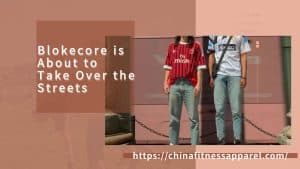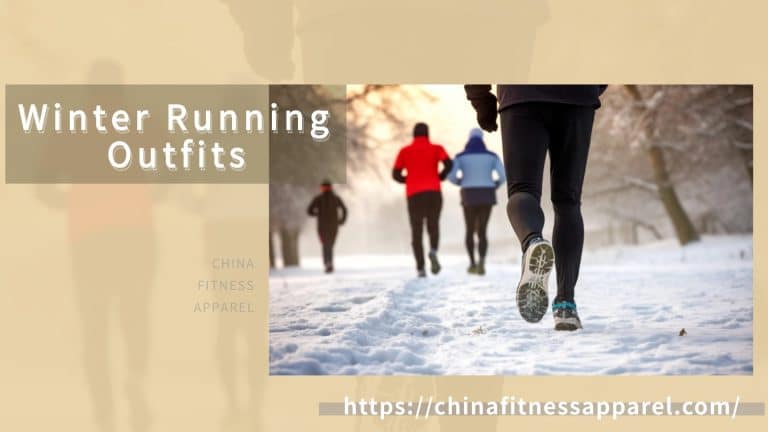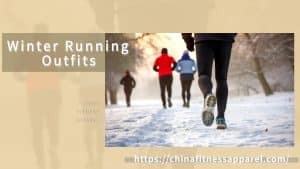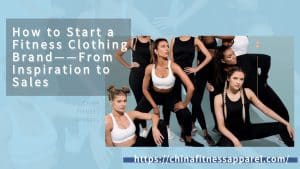
11
Oct '24

Winter Running Outfits
When going out for exercise in winter, it is important to do a good job of keeping warm. Failure to keep warm may cause hypothermia, frostbite, colds, and fever. We should pay extra attention to the issue of clothing, so what to wear for outdoor exercise in winter?
Winter Running Outfits
Choose clothing based on temperature
A globally authoritative fitness magazine has provided a dressing guide, with the following recommendations for dressing in low-temperature environments:
-1-4 ℃: Quick drying long sleeves, quick drying shorts, sports pants or leggings, gloves, headband that can cover the ears (the perceived temperature during exercise is about 4-15 ℃)
-7-2 ℃: Two layer top – quick drying long sleeved+quick drying short sleeved, or long sleeved+jacket – sports pants, leggings, gloves, headband or hat that can cover the ears (the perceived temperature during exercise is about -1~9 ℃)
-12~-7 ℃: Two layer top, tight pants, running gloves or finger gloves, headband or hat, windproof jacket/pants (perceived temperature during exercise -7~4 ℃)
-17~-12 ℃: Two layer top, tight pants, windproof jacket/pants, gloves, headband or hat, ski mask (perceived temperature during exercise -12~2 ℃)
There are also techniques for how much to wear. Generally speaking, when exercising, the best way to dress is to achieve a balance between self heating, clothing warmth, and external temperature.
Three layer dressing method
There is a classic three-layer dressing rule for winter clothing: the inner layer is sweat wicking, the middle layer is warm, and the outer layer is windproof. Underwear with inner layer for sweat and moisture wicking is generally functional underwear, while middle layer warm clothing is best equipped with zippers to open the collar and dissipate heat. The outer windproof layer is very important in windy weather, as simple insulation and sweating will be greatly reduced when encountering strong winds.
First layer: Sweat absorbing layer: To allow sweat to quickly evaporate through clothing, quick drying clothing is generally chosen for this layer, which can absorb sweat, prevent water loss from the body, and maintain body temperature. It is not recommended to wear pure cotton. Although pure cotton is comfortable to wear, it is not conducive to sweating. On the contrary, pure cotton clothes will absorb sweat after sweating, and it is easy to catch a cold when it cools down.
Second layer: Thermal layer: Choose a jacket with good thermal insulation, usually made of polyester material. If you find it cold, you can pair it with a vest. If it is possible to maintain heat without excessive loss in a windy outdoor environment.
Third layer: Isolation layer: You can choose a sports jacket or a submachine jacket. This layer is mainly designed to resist extremely harsh environments such as rain and snow, providing absolute isolation.
If the weather is not too cold, two layers are also possible, with the inner layer sweating and the outer layer windproof. Wearing bottoms doesn’t have to be as complicated as wearing tops, because the legs are full of muscles and have stronger cold resistance. You can choose slightly thicker compression pants or woven pants. If you are afraid of the cold, you can wear a pair of quick drying leggings and put on a pair of sports pants on top.
Sports accessories that cannot be ignored
In addition to regular warm clothing, some accessories also play a crucial role in keeping warm, such as hats, gloves, socks, etc.
If you go for outdoor running in winter, you can choose gloves with flexibility instead of blindly choosing warm and heavy styles. Gloves with conductive design will not affect the use of touchscreen phones, making them more convenient. There are also sports socks. Don’t blindly choose thick socks for winter fitness just because the temperature is low, because the heat generated during training increases, which can accumulate water vapor and cause blisters. It’s better to wear sports socks for easy sweating.
Winter exercise precautions
Warm up is necessary
Whether it’s winter or summer, it’s important to warm up before exercising. If you don’t warm up well, it won’t be worth the loss if you harm your body during later exercises.
Can turn on the heating appropriately
Due to the cold weather in winter, we often take off our outer clothing after warming up during exercise, which can easily lead to catching a cold. Heating can be turned on appropriately in winter gyms, especially those with low indoor temperatures. Heating is very necessary. And once you start practicing and your body temperature gradually rises, and get used to the indoor temperature, you can turn off the heating.
Cannot wear too little
It is recommended not to wear too little for winter fitness. It is best to wear long sleeved shirts and pants on the outer layer. For summer style backless and waist exposed tank tops, wear them on the inside first (except for areas with outdoor temperatures above 20 degrees Celsius), otherwise it is easy to catch a cold. If you feel cold, as mentioned above, turn on the heater. At the same time, it is recommended that everyone wait until their body sweats slightly after practice before taking off, so as not to let their body get cold.
Don’t go too far
No matter when, excessive training should be avoided, and the same goes for winter. Winter is more physically active than summer, and many students often feel that the intensity is not enough after training, so they may continue to practice for a few hours. In fact, this is not right. Winter training should not be excessive, just do one and a half hours of training per day.
The difficulty cannot be too high
It’s best to train according to your abilities, don’t try to be too strong and do actions that you can’t do. Excessive intensity movements, if one’s body cannot adapt, can only lead to bone and muscle strains, resulting in muscle soreness and even the possibility of damage. For winter training, it is advisable to sweat lightly or not sweat at all. Sweating profusely is not good and can easily lead to sweating and catching a cold. And try to maintain a good mood during training, the effect will be very good!
If you feel uncomfortable, please stop practicing immediately
Fitness training is a way to make people feel happy and relaxed. If you feel uncomfortable, tired, or painful, it is recommended to stop practicing immediately. You can drink a cup of warm water to relieve stress, and if you want to relax, you can also listen to some cheerful songs before training, which will be helpful for you.
Share:


China Fitness Clothing
An Expert with 23 years' experience in the production of fitness clothing, focusing on providing customers with worry-free, easy-to-use and premium quality activewear production solutions with reasonable cost. Keep sharing, keep learning together with our clients!
Latest Post


Don’t Just Focus on Lululemon, 3 Steps to Find Easy to Wear Yoga Pants


How to Start a Fitness Clothing Brand——From Inspiration to Sales
Share
Quick Message

